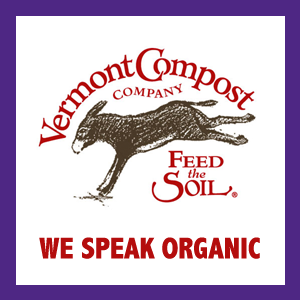- Center-to-center wheel spacing on their tractors; and
- Whether they are using a raised bed or flat bed system.
At Rock Spring Farm, we have a 60 inches center-to-center wheel spacing on all of our tractors. The Allis Chalmers G can be set to this width. This also means that most of our equipment also fits on, or is modular to, this spacing: our rototiller is 60 inches (which is a little too narrow), our tine weeder is 60 inches, and our drill is ten feet.
We've used a number of different row spacings in our thirteen years. We started off with the Eliot Coleman-recommended 3 12-inch or 2 24-inch rows. An equipment purchase the next year led us to work on 4 10-inch rows, which left the outer rows 30 inches apart. With this setup, we experienced quite a bit of disease pressure, and mechanical cultivation with anything other than a basket weeder was very difficult.
In 2005, we changed over to a system of 3 15-inch rows, and we have stayed with that ever since. This spacing has definitely improved our disease control by improving air flow, and it has made mechanical weed control much easier. We use our Buddingh basket weeder to cultivate either all three rows, or with an added sweep (purchased from Buddingh) to clean the middle row when we have crops on two rows.
When we stopped using soil blocks in 2009, we purchased a 2-row mechanical transplanter to replace our water wheel planter for every-day use. The new transplanter only plants two rows, so on transplanted crops we tightened up our in-row spacing by about 30% to maximize our productivity. Anne and Eric Nordell have done some in-depth analyses about planting more densely in the row to account for the wide-row spacings they used on their farm. The wider row spacing allows us to back the crops more densely in the row because we have plenty of air circulation; and the plant roots still have plenty of soil to scavenge in. See the illustrations in this online book to see how wide vegetable root systems are: http://goo.gl/S3kMF.
If I had it all to do over again, I would use a 72-inch tire spacing, and set my rows at 18 inches. My 30-inch 2-row spacing right now is too narrow to effectively hill potatoes. Further, my experience leads me to feel that the more dirt I can move, the more potential I have for effective weed mechanical weed control, and since that's such a key factor for yield, speed of harvest, and labor expenditures, it feels like the most critical thing to build an organic vegetable farming system around. However, the wheels on many older cultivating tractors won't adjust that wide without special spacers, which are available but which come with an additional hassle-factor.




 RSS Feed
RSS Feed
